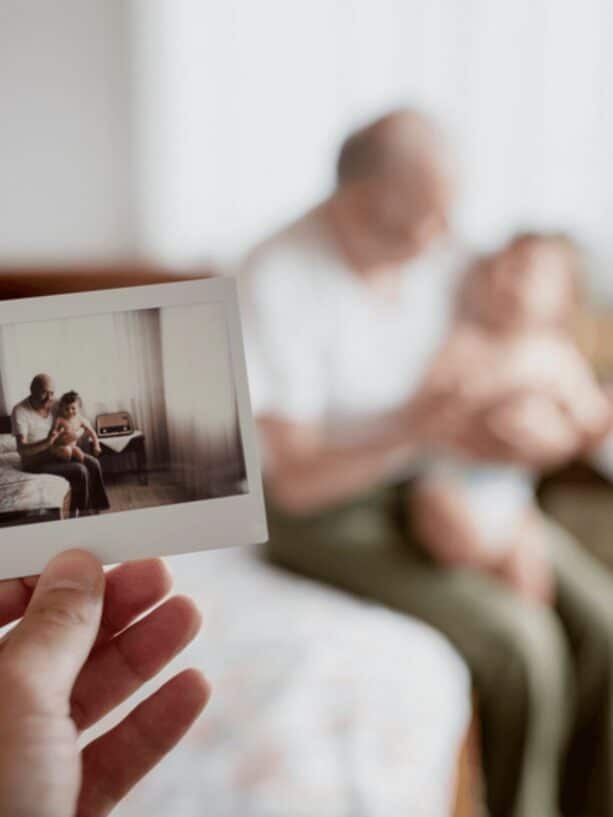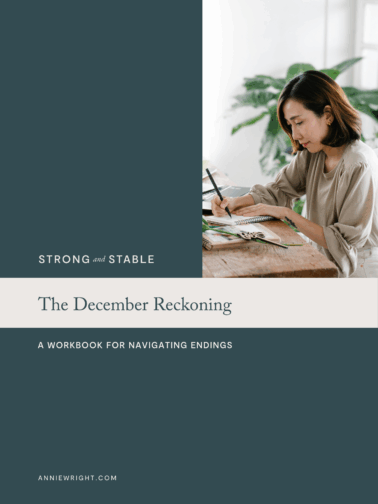TL;DR –Family genograms go far beyond elementary school family trees, using specific symbols to map psychological and relational patterns across generations. Unlike personality quizzes that offer quick insights, genograms require effort and historical digging but reveal powerful data about intergenerational trauma, mental illness patterns, and relationship dynamics that have shaped your family system. Creating one involves mapping basic family information then adding layers of detail about relationship quality (hostile-fused, distant-violent, enmeshed) and displayable attributes (mental illness, addiction, abuse patterns).
The power lies in making explicit what's been implicit—seeing how mother-daughter hostile relationships cascade down matrilineal lines or recognizing that distant-violent marriages appear across paternal generations. This visual representation helps you understand why relatives behave as they do, what patterns you might unconsciously perpetuate, and what requires mindful intervention to prevent transmission to your children. While completing a genogram can be emotionally triggering (especially when mapping abuse or dysfunction), it offers invaluable self-awareness for breaking cycles. The genogram becomes a tool for compassion—understanding that your parents' limitations likely stemmed from their parents' patterns—while empowering conscious choice about which family legacies to continue and which to transform.
I’m a sucker for personality typing quizzes.
For as long as I can remember, I’ve loved those tests, quizzes, and inventory lists that help me collect more puzzle pieces of who I am.
Myers-Briggs, Enneagram, Love Languages, Strengths Finder, Kolbe Index, all of those tests I’ve taken, enjoyed and are, I think, great for potentially discovering more poignant data pieces about yourself.
Now, importantly, I think of these quiz results as pieces of the puzzle of you, not the whole puzzle.
No quiz is ever going to contain the be-all-end-all answer to who you are and show you all of what you may need to know as you move through the world.
But, recognizing this, one of the most powerful “puzzle pieces” I’ve come across for myself and my clients can sometimes be found in the tool of making a family genogram.
Now, a family genogram isn’t as simple as answering a checklist of questions. A family genogram requires more effort and self-reflection (if not historical digging) on your part. But once you complete your family genogram, it can often contain very valuable data that can better help you understand where you come from, why dynamics are the way they are now, and what you may need to be mindful of in terms of your own personal work if you would like to create intergenerational change (with your own kids, your own spouse).
So, if you, too, enjoy tools that help illuminate puzzle pieces of your personality and history, and if you’d like to explore one of my favorite psychological tools, keep reading.
What is a family genogram?
Remember those family trees most of us had to make in elementary school?
A genogram goes far beyond simply listing individuals, names, and dates of birth and death. It uses a set of symbols to capture deeper and more nuanced information. This includes the kinds of relationships that exist—or once existed—across the family tree, and what those individuals may have dealt with in their lives.
The goal of the family genogram is to offer us a graphical, rich, detailed look at the unique and possibly complex medical and psychological factors that play out across the generations of your family.
Think of it as a family tree for grownups or as an ancestral, psychological map-making.
Why is a family genogram important?
I’m a big believer that knowledge is power (hence my love of those personality-inventorying quizzes!).
When we create a family genogram, we can make explicit the intergenerational patterns that have played out across the generations of our ancestors. Patterns that may still be playing out today.
When we can see the patterns (for better or for worse) of interpersonal and intrapersonal dynamics that have come before us, influenced us, and may still be influencing us, we’re armed with increased self-awareness.
Curious if you come from a relational trauma background?
Take this 5-minute, 25-question quiz to find out — and learn what to do next if you do.
START THE QUIZWith this knowledge, with this increased self-awareness, we can then be more mindful of what we may need to do if we want to stop certain intergeneration patterns from perpetuating (with our kids, with our spouse, with ourselves, etc.), we can better understand why our living relatives are the way they are, and we can, perhaps, have greater compassion for ourselves and others when we see more plainly what their experience has been like.
And, put plainly, making a family genogram can just be plain old fascinating!
How do I make a family genogram?
Family genograms can be simple or astonishingly complex.
Some licensed mental health professionals have access to software that can help us co-create elaborate family genograms for our clients, but honestly, you definitely don’t need to have this or have a therapist who has access to this in order to create a powerful family genogram.
To make a family genogram you need to have a baseline understanding of the names and roles and births and deaths of your ancestors, and you also need to have access to a few charts of the different symbols we use on a genogram.
I’m including a link to a good set of symbol charts here and I will say that, of the multiple charts listed, I personally find the most valuable charts the displayable attributes and interpersonal relationship symbols.
Why?
All of the symbols are great and worth adding. (if you can create a genogram on a piece of paper big enough to accommodate all the symbology!) But because I tend to work with individuals who have experienced complex relational trauma (or developmental trauma), I find it to be helpful to my clinical work with them when we can identify and make explicit any mental illness or dysfunctional/abuse dynamics that may have played out (using the displayable attributes and interpersonal relationship symbols) in order to better contextualize and normalize their experience of suffering as a result of coming from dynamics like this.
It’s really powerful (and often sad) to see just how pervasive patterns of mother-daughter close-hostile relationships have been down your maternal line, or to see that there is distant-violent patterning across the paternal line of husbands and wives down the paternal side.
So, to make a family genogram, I would encourage you first to get a big piece of paper (printer paper may be okay but you’ll likely have more flexibility to really flesh out your family genogram with a big piece of art paper).
Next, begin mapping out all of the basic family tree info you know of for your family lines. Names, relationships to each other, birth dates, death dates, divorce dates.
Then, open up that chart of symbols I shared before.
Using different colored pens or pencils, begin filling out what you know of the interpersonal relationships and displayable attributes of your family system.
If you get stuck, if you don’t know what to code something as, write down that question. Either take it to your therapist or to research later, and move on.
Fill out as much as you can with the knowledge you have. (Or the emotional energy you can give this process.) And then step back.
Even if you just complete a few individuals and relationships, you should have something that looks like this.
How to use your family genogram as a self-reflection tool.
Per the illustration above, you can see how complex and also illuminating even a tiny little portion of a genogram can be!
For instance, in this one, we see a maternal history of hostile-fused relationships. Between mother and daughter down the matrilineal line. (Hostile-fused relationships are ones in which there is much contact between the two individuals. But also many conflicts and sometimes secrets and actions against one another).
(Side note: For a good list of how the interpersonal symbols are defined, this is a good reference.)
So, after your family genogram is complete, we can use your map as a self-reflection tool.
You can do this work with or without your therapist. But I will say that if the information you unearthed and depicted feels heavily triggering, please consider doing the self-reflection questions in the presence of your therapist or another skilled facilitator.
And then, ask yourself the following questions based on what your family genogram is showing you:
- Looking at my family genogram, what are the relational patterns that seem to play out the most across my family history?
- What surprised me in terms of patterns that showed up on my family genogram chart?
- What patterns were unsurprising?
- What are the most dominant mental illnesses and medical conditions that exist in my family history?
- Will I need to have particular mindfulness about these conditions for myself and my own children?
- What does my family genogram say about the quality of marriage that my ancestors seem to have had?
- Are there any successful examples of marriage/long-term partnerships in my family genogram? What context existed to make these partnerships successful?
- What seems clear now about the parent-child dynamics I experienced with my folks? When I take into account the dynamics they experienced with their parents?
- What makes me most sad when I reflect on my family genogram?
- What makes me most hopeful?
- With my kids (or if I choose to have kids someday) what are the relational patterns that I may need to be especially mindful of if I don’t want to perpetuate them? What would it take not to perpetuate them?
- Am I playing into dynamics currently with my spouse, kids, parent(s), siblings that I would prefer to stop? What would that take? Is it possible?
- What do I know about the marriage modeling that I’ve been exposed to? And, given this, can it normalize and validate and struggles I feel in my own romantic relationship?
- What still feels like a mystery to me in my own family genogram? What gaps are there to answer? Who could possibly provide these answers?
- Looking at my family genogram, can it help me have more (even a tiny little bit more) compassion for myself? And those who came before me? Does it make more sense that they and I would have acted in ways we did? Given what we come from?
- How can the information my family genogram provided be a useful tool? How can it help me shift and transform my own behaviors? And move closer to the life I envision for myself?
Mapping Your Ancestral Trauma Through Genogram Work
When you sit with your therapist creating your family genogram, you’re not just drawing a family tree—you’re mapping the invisible forces that shaped every generation before you and continue influencing your present relationships. Your therapist guides you in using specific symbols to capture what elementary school family trees never could: the hostile-fused relationship between your grandmother and mother that you now recognize in your own mother-daughter dynamic.
Together, you trace patterns that explain so much. The distant-violent marriages down the paternal line suddenly illuminate why being the black sheep in your family felt like the only way to break free from inherited dysfunction. Your therapist helps you see how being different wasn’t defiance but survival.
As you add symbols for mental illness, addiction, and abuse, the genogram reveals how trauma traveled through generations like an invisible inheritance. That anxiety you’ve battled isn’t just yours—it’s been passed down through three generations of women who never had the tools to process their own trauma.
Your therapist validates the grief that emerges seeing these patterns laid bare. The successful marriages you hoped to find as models simply aren’t there. The childhood you experienced wasn’t an anomaly but part of an intergenerational pattern nobody knew how to break.
Yet this mapping also empowers. With your therapist’s support, you identify specific patterns to interrupt with your own children. You see where unconscious repetition might occur and develop strategies for conscious change.
The genogram becomes both witness and tool—acknowledging what was while creating a blueprint for what could be. Your family’s past is written in those symbols, but your future remains uncharted territory you get to map differently.
Wrapping up.
Remember, a family genogram, even the most robust and complex one, is only a piece of the puzzle of you. It’s not reflective of the whole puzzle of you.
But I hope that this felt interesting and helpful at some level. In terms of illuminating more “puzzle pieces” of you.
Now, if you’ve made a family genogram in the past or if you use this blog post to make one, I’d love to hear from you in the comments:
How was this process for you? Did it feel helpful and useful to make a family genogram as part of your own personal work? Tell me what the experience was like for you. I’d love to hear from you!
Here’s to healing relational trauma and creating thriving lives on solid foundations.
Warmly,
Annie





